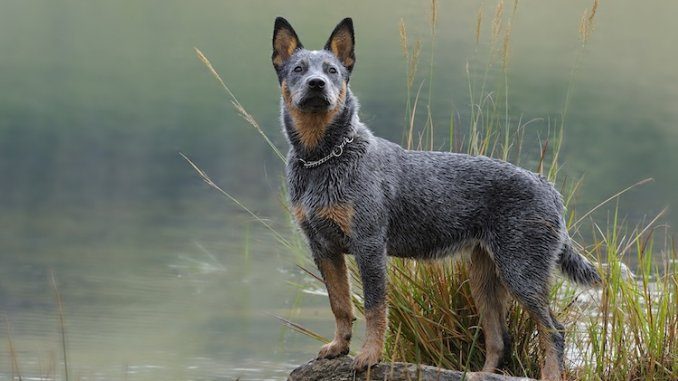
The Blue Heeler is a unique and special herding dog from Australia.
Straight from the outback they are widely known as ‘Heelers’ for their habit of nipping at the heels of cattle.
They make great farm and ranch dogs with their hard-working nature and can also compete in Obedience and Agility sports because of their intelligence.
These dogs made their way to the US after soldiers in WW2 returned home with them. They quickly gained popularity because of their loyal temperament and alert nature.
Read on to find out if the Australian Cattle dog could be a suitable pet for your household…
TABLE OF CONTENTS
What Is A Blue Heeler Dog?
Blue Heelers are certainly unique dogs and not just because of their special coloring!
They have an exciting and well-documented history.
The Blue Heeler was originally bred as a working dog to herd cattle over long distances.
Heelers were selectively bred for their high energy levels and stamina. This helped them cope with the rough terrain and high temperatures of the Australian outback.
As a result of their working history this dog is incredibly intelligent and focused. They need a large amount of exercise each day. Potential owners will need to be active and have plenty of time dedicated to exploring the outdoors.
They can adapt well to the lifestyle of a pet provided they are appropriately exercised to prevent boredom and frustration.
Breed Origin
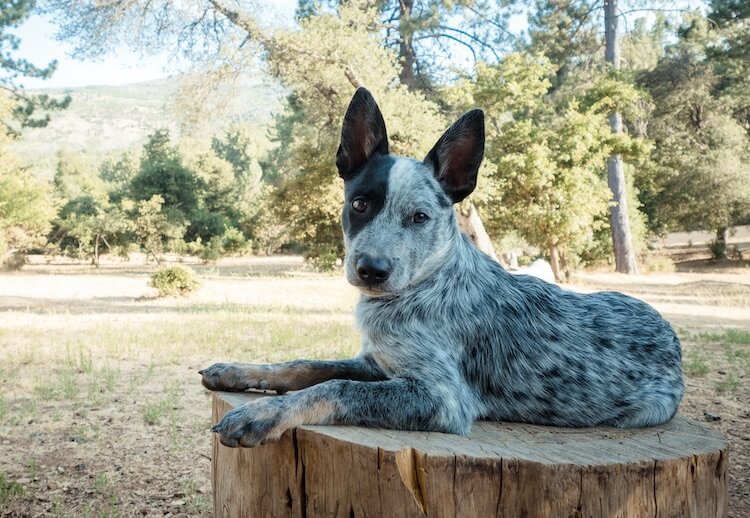
From Adobe Stock
The Blue Heeler was originally bred to herd livestock in Australia in the 19th Century.
The first settlers required a dog who could guard and herd livestock in blistering heat. They also needed their dogs to withstand the tough terrain of semi-wild ranches and have the stamina to run long distances.
A rancher named Thomas Hall bred a Border Collie with an Australian Dingo to create a Halls Heeler.
The Halls Heeler dog was then bred with Dalmatians, Bull Terriers and Kelpies to create the Blue Heeler.
By the late 19th Century this breed was well established.
Kennel Club Recognition
First introduced to America in the 1940s, it is thought that Australian soldiers brought the breed to the United States during WW2.
This dog was recognized by the American Kennel Club in 1980 and ranked 55th out of 195 breeds for popularity.
The official name for the Blue Heeler is the Australian Cattle Dog.
Under this name they are recognized by:
- Australian National Kennel Council
- Canadian Kennel Club
- Kennel Club
- New Zealand Kennel Club
- United Kennel Club
The Australian Cattle Dog Club of America is their official breed club in the US.
If you are looking to adopt a Blue Heeler rescue, the Cattle Dog Rescue Association, based in New York, has been working to re-home these dogs from shelters all over the US.
Why We Love The Blue Heeler
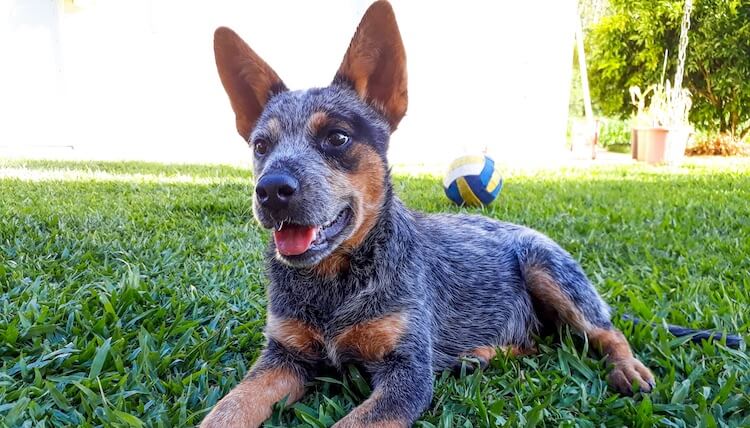
From Adobe Stock
- They are one of the smartest dogs you will meet and have lots of potential to work or compete in canine sports!
- Blue Heelers are a hard-working and sturdy breed that won’t let you down.
- Their popularity has spread across Australia, over to the United States and then across the pond to the United Kingdom. They are now ranked the 55th most popular breed.
- This breed is very loyal and pleasant to have around, they make great pets and can form really strong bonds with their owners.
- These dogs have a unique and wild look.
Breed Facts

From Adobe Stock
Weight
35 to 50 pounds

From Adobe Stock
Height
17 – 20 inches

From Adobe Stock
Price
$1,000

From Adobe Stock
Lifespan
12 to 15 years
Blue Heeler Puppies
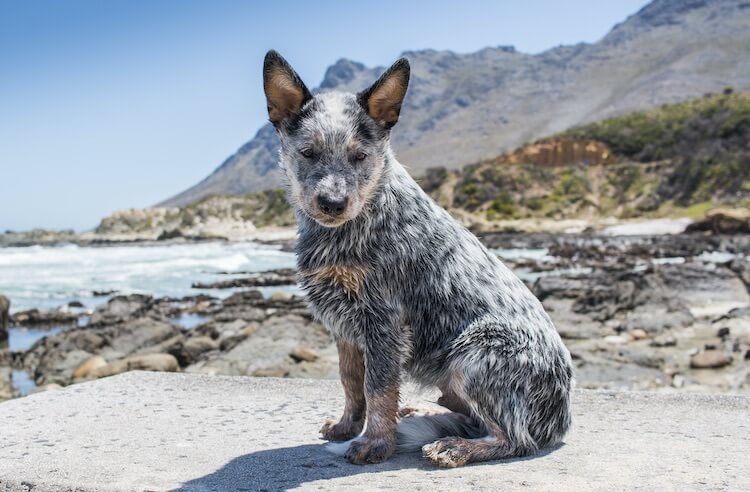
From Adobe Stock
Blue Heelers usually have litters of five or six puppies, but this can range from between one and seven.
A good puppy to bring into your family should be confident and happy to approach you.
Both Blue and Red Heeler puppies are born white.
Their adult color will grow through as they develop and mature – and these puppies will grow fast!
They will reach physical maturity at around 18 months of age:
| 3 | 13.5 to 15 |
| 6 | 24 to 27 |
| 9 | 28-35 |
| 12 | 31-50 |
How Much Do Blue Heelers Cost?
A Blue Heeler puppy will cost $600 to $1,000 for a puppy registered with a Kennel Club.
When looking for a puppy it is likely you will need to look for Australian Cattle Dog puppies. The best place to find reputable breeders is through Kennel Club websites. They have a list of registered breeders.
Always make sure to ask for documentation of recent health checks for both parents and never bring a puppy home before 8 weeks of age.
It is always important to try and see the parents (especially the mother).
An experienced breeder will know the lineage of their puppies and will be able to provide relevant information on the health of the bloodline.

From Adobe Stock
Blue Heeler Temperament
- Loyal
- Hard Working
- Intelligent
- Overconfident
- Enjoys Herding
- Aggressive
The loyal and pleasant personality of Blue Heelers is what makes them so popular. This loyal temperament means they form a strong bond with their owners and can be great guard dogs for livestock and property.
Known for being sweet-natured they have a love of human interaction and play time.
This breed is very protective of their family and is usually on high alert. They are quite wary of strangers.
They are not known for barking or howling excessively unless they notice something is wrong. Because of this they are unlikely to show aggression and are more likely to bark.
These dogs were bred to herd and protect cattle so they can be territorial.
They can sometimes be a bit wary of other animals and dogs. They may exhibit this through growling and raised hackles.
Slow introductions and socialization to a range of dogs at a young age will help to combat this.
If given plenty of reassurance they should soon warm to the new people and dogs.
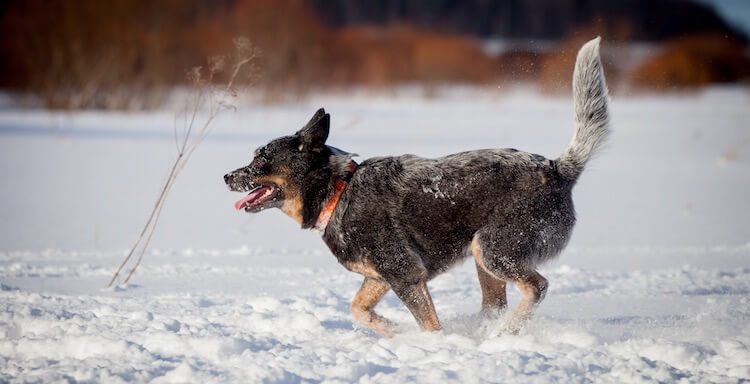
As they were originally bred to herd, they have quite a strong prey drive.
Their instinct to chase anything runs deep inside them!
Care should be taken with the Blue Heeler when in large open spaces. Sometimes their intelligence means they are highly trainable and so can be taught to “leave”.
Are Blue Heelers Aggressive?
Aggressive behavior towards humans in Blue Heelers is very uncommon.
However, Blue Heelers are hardworking and intelligent dogs that are bred to herd and protect cattle. Their protective streak in them can turn to aggression if not properly managed.
They have a confident personality, which means they need clear boundaries and lots of socialization.
This is essential to helping them distinguish between threatening and non-threatening situations.
Are Blue Heeler Dogs Good Pets?
Yes. They are a great dog to join a farm or ranch environment. They are very hard workers and intelligent.
However, their need for a purpose and desire to work means that they are not suitable for families with very young children.
Their natural behavior of nipping at the heels of livestock sometimes occurs in family settings. They have been known to:
- Nip small children during play – especially when over excited.
- Chase small family pets in their garden.
These behaviors are manageable with appropriate training. But it is something potential owners should bear in mind.
Generally, the Blue Heeler dog is great around older children, but supervision is advised to allow intervention if play gets a bit too rough.
Blue Heelers are friendly and sociable dogs if they have been adequately trained and socialized.
Blue Heeler Size
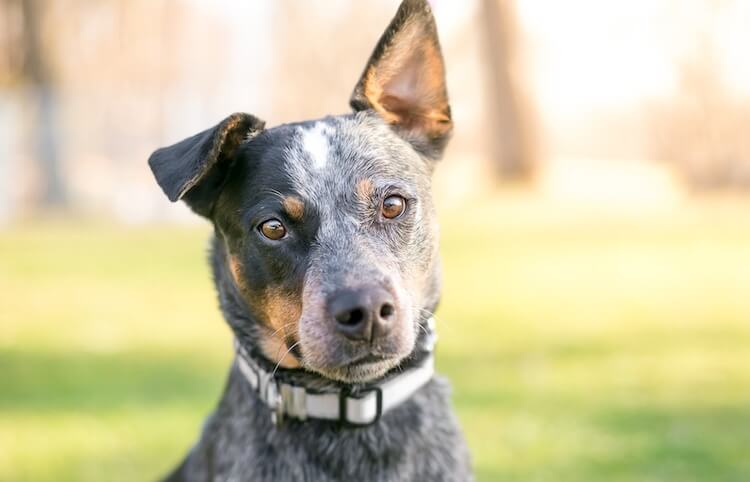
Blue Heelers are a particular color variation of the Australian Cattle Dog. They have a unique blue coloring.
This dog is classed as a medium sized dog, ranging from between 35 to 50lb.
Generally, females are slightly smaller, measuring between 17-19 inches to the withers, in comparison to males who are between 18-20 inches.
Color and Coat
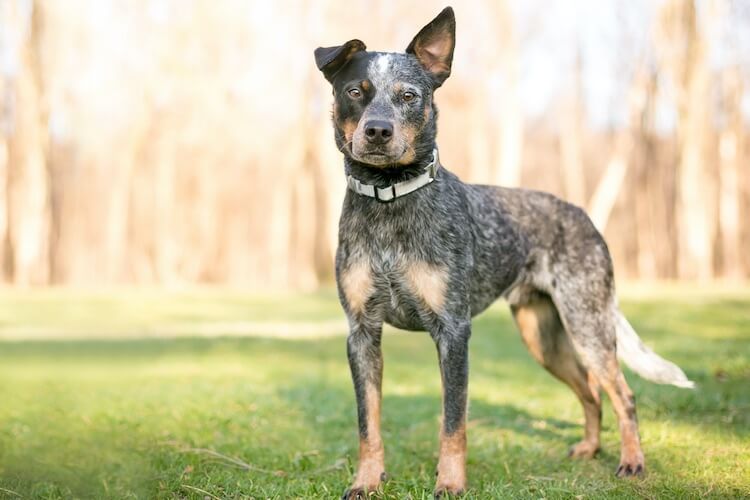
From Adobe Stock
Blue Heeler is the nickname given to an Australian Cattle Dog that has a blue coat. The red color variety is often nicknamed the Red Heeler.
They can be blue, blue mottled or blue speckled with or without white and dark markings on the head and ears.
The unique color patterns of this breed have led to them starring in films such as Mad Max 2!
Their forelegs usually have some tan color at around mid-way which can extend to the chest and neck.
Do Blue Heelers Shed?
Yes. They shed heavily twice each year. The Blue Heeler has a short double coat that sheds seasonally – as opposed to moderately shedding all year round.
Frequent brushing and a warm bath during the shedding season will help to contain the shedding.
Weekly brushing with a slicker brush is adequate for a short double coat to remove any loose undercoat.
Bathing is only necessary as needed, since Blue Heelers aren’t particularly known for a smelly coat unless they roll in something they shouldn’t.
Appearance
The Blue Heeler is an athletic and muscular dog.
Strong and compact, they have a broad head with a powerful jaw and a black nose.
Their ears are set wide apart on top of their slightly curved head and always held ‘pricked up’.
They have sloping shoulders but a level back on top of strong forelegs and muscular hind legs.
In America, it is quite common for the tail to be docked on working dogs, however in Australia, Canada and the UK, it is usually kept at full length to aid their maneuverability in turning quickly.
Care Guide, Feeding, Exercising and Training

This type of dog needs to be worked and have a purpose in life to thrive.
They are best suited to a farm or a busy and active household with an experienced dog handler.
You will need to be familiar with correct training methods and have plenty of time for their demanding exercise needs before adopting this dog.
Food and Dietary Requirements
| Daily Food Consumption | |
|---|---|
| Guide | 1,000 calories |
| Cups of Kibble | From Adobe Stock |
The Blue Heeler is known for being able to live off a very limited diet.
It is very important for owners to keep an eye on their dog’s weight to ensure they are a healthy size.
Blue Heelers should be fed twice a day with total 1-2 cups of kibble depending on their weight.
Working Heelers may require a diet that is richer in protein in order to fuel their energy levels.
Exercise Requirements
| Daily Exercise Requirements | |
|---|---|
| Minutes | 60+ minutes |
| Activity Level | From Adobe Stock |
The Blue Heeler has a remarkable amount of energy.
An ideal exercise for this dog is herding cattle – that’s what they were bred to do.
If you can’t provide your dog with herding opportunities then make sure you give them at least two hours of vigorous exercise each day.
They are also very playful canines, and so are happy to spend time swimming or playing fetch.
This dog is a great candidate for obedience, agility and other canine sporting activities because of their high energy and focused mind.
How To Train A Blue Heeler
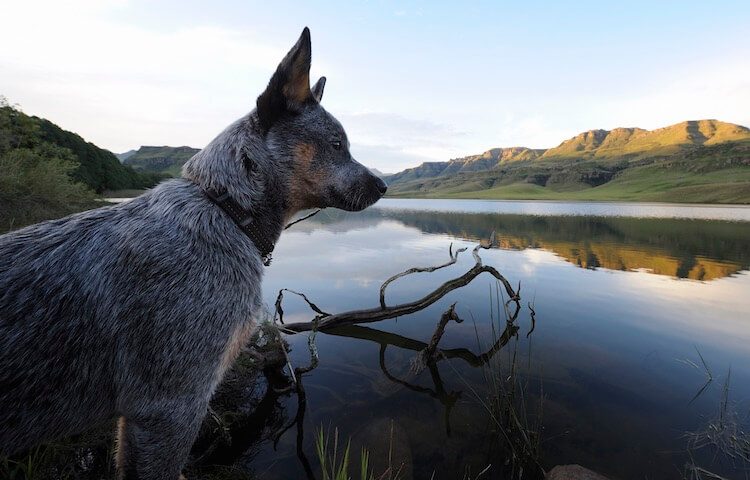
From Adobe Stock
These are very intelligent dogs that were bred to help farmers in the Australian outback herd their cattle. This means that they have so much potential to learn how to herd as well as tricks.
They are quick learners and well-suited to the working lifestyle.
With a strong prey drive, and a one-track mind, it is important for training to begin early.
Lots of training and exercise is required to keep the Australian Blue Heeler mentally stimulated, this will help to prevent undesirable behaviors (e.g. destruction and chewing).
Blue Heeler Lifespan

From Adobe Stock
The Blue Heeler dog has a good reputation for longevity and typically can live between 12 and 15 years old.
This breed holds the Guinness World Record for the oldest dog ever. At 29 years and 5 months Bluey was an Australian Heeler that worked for over 20 years.
As with most dog breeds, there are unfortunately some common health problems:
- Hip Dysplasia is a malformation in the development of the hip joint that can result in arthritis and lameness.
- Progressive retinal atrophy is a degenerative disease that can cause blindness.
The gene responsible for their blue color can also cause hereditary diseases. It has been linked to illnesses such as hearing problems. They are prone to congenital deafness.
Unfortunately, it can’t be prevented or treated but these canines are very intelligent and should still be able to train from hand signals.
Blue Heeler FAQs
- How much exercise does a blue heeler need?
- How fast does a blue heeler run?
- Why does my blue heeler follow me everywhere?
- How big does a blue heeler get?
- At what age do blue heelers calm down?
- Why do blue heelers bite so much?
- What is the difference between a blue heeler and an Australian Cattle dog?
- Are blue heelers good in hot weather?
- Is a blue heeler a cattle dog?
- How much is a blue heeler dog?
- Are blue heelers strong?
- Are blue heelers good with strangers?
- Can blue heelers be left alone?
- Do blue heelers shed a lot?
- What breeds are in a blue heeler?
- Can a blue heeler be a family dog?
- Are blue heelers aggressive?
- Are blue heeler dogs good pets?
Summary
Blue Heelers are loyal, athletic and playful. They are famously intelligent and hard working too.
They make perfect working dogs for families with older children and great guard dogs.
However, these dogs are strong leaders and need experienced handlers. They require someone who can implement a training plan which will combat the caution of strangers and a strong prey drive.
Their owner should also be prepared for their high energy levels and have access to plenty of outdoor space.
Have you had any experience with a Blue Heeler?! Let us know below.

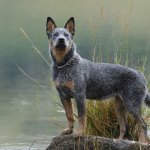
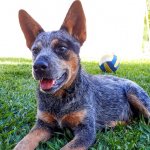
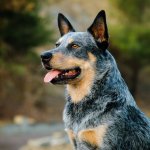


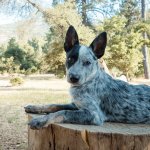

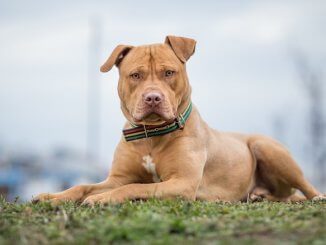
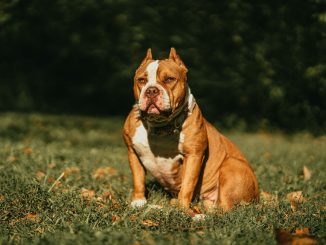
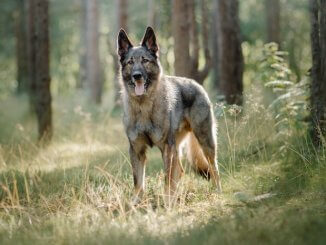
Our blue Heeler was the best thing that ever happened to our family of five children. (Multiples) Focused on her children at all times she was very concerned when they jumped into water of climbed up to a place she couldn’t follow. We taught her to swim, so she followed us in the rivers everywhere we went.
She was a marvelous dog. The neighbors thought she could understand English, because she knew each child by name. She never needed a leash, and was keenly obedient. Happy, she was composed and relaxed. Very protective, but keenly intuitive she took all her cues from the family and was the most perfect dog in the world, with nothing to forgive, for fifteen healthy years. Our vet said he’d never in all his decades in the profession, had never seen a more intelligent and obedient pet.❤️
I currently have three heelers 2 red and one blue. All trained on hand signals and the youngest is only 4 months old. But yes it takes a lot of time to play and train these beautiful dogs. However so worth it. Only dog breed I have ever owned. We love to hike and they love to run but they must be taught to stop and come. Before you can let them run around the mountain they will pick up on a dear and run it down if you let them. Take the time to train your dog. Give them the world as their playground and they will be your world. Love my heelers kita, colt and gabby.
Wondering if this site is being monitored after seeing the dates. I would really appreciate it if someone would contact me. I have a female blue heeler (1yr) that was given to me. I do not have ant way of knowing her background.
My problem is that she actually attacks me (I am 71) mouthing and jumping. Its like crazy. She is my velcro strip that makes strange little noises then she is the demon.
She has had formal obedience classes but nothing seems to stop this behavior. I play tug a war and fetch with her several times a day. Help please! I do not know what to do to stop this.
I have a heeler also. I am 79. Awesome dogs. I can’t think of anything else to teach him.
What is her favourite type of play, probably tug. I would suggest you distract her from the bad behavior by saying “Where’s your rope”, or ball. I would ignore her if she doesn’t. I’ll bet she quickly stops and gets her rope. The aim is to teach her she doesn’t get to have any fun unless she plays your way,